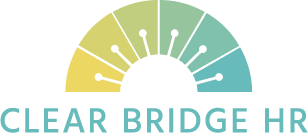Staying on top of employee sickness
December 22, 2023
Employee sick absence can very easily become a headache for employers. Have you ever noticed how an individual having 1 or 2 days off here and there can start to add up? If you’re not actively monitoring and reporting on your employee’s sick absence, there could be some early warning signs that you are missing. Actively monitoring will allow you stay informed and help to avoid short term absence developing into long term absence.
Ultimately sick absence costs you and your and business, whether that’s through sick pay or loss of productivity.
Here are our top tips on how to manage sick absence more effectively in your business...
- Create a policy to show employees that you take sick absence seriously and outline what your rules are when it comes to payment and reporting. Having a clearly defined policy means that, not only will you deal with cases consistently, but that you’ll avoid any claims of unfair treatment.
- Make sure that employees are following your rules of notifying you of their absence. If your policy states that they must phone their line manager no later than 9.00am on the first day of their absence, ensure that they do this and if they don’t, that you follow this up with them upon their return to work.
- On that note – hold Return to Work meetings. Discuss every absence with the employee when they return to work and keep a written record of the conversation. Having a template for you and managers to use will help ensure that you are being consistent, we can help you with this. During the Return to Work meeting, reinforce the impact of the employee’s absence on the business and their colleagues.
- Keep records of all absences and the reasons for them. Using an HR Software is the simplest way to do this and will allow you to spot any patterns which may need further investigation, for example an employee who is consistently absent on the last Friday of each month.
- Use absence triggers within your policy to manage sick absence more effectively. Setting out triggers in your policy will mean that you can easily take action if an employee’s sick absence level rises above these triggers, for example 5 days absence over a 6 month period.
- Where an employee has hit the triggers outlined in your policy, take the time to investigate the reasons into the absences to understand any underlying issues that may require additional support. Where your contract allows, you can also request that an employee attends an occupational health assessment.
- Where sick absence levels continue to be high, implement your capability or disciplinary procedures as appropriate and ensure that a fair and consistent process is followed each and every time you deal with a case.
- Always remember that if an employee has a disability or a condition that may result in them being covered by the Disability Discrimination act, you must take extra care to ensure that you have considered making reasonable adjustments for them in the workplace. This could be anything from adjusted working hours to specialist equipment to allow them to perform their role. If you are ever in doubt, always seek professional advice to ensure you are not leaving your business vulnerable.
And finally, if you don’t already have your sick absence and capability policies in place, or they are no longer fit for purpose then contact us
today for a full review to ensure that you manage sick absence effectively in your business.
Other posts:

Summer is here and with it comes fresh challenges for employers. From the surge in side hustles to the never ending debate about switching off after hours. In this blog, we’re diving into what these trends mean for your business and sharing practical tips to help you stay ahead and keep your team happy and compliant.


